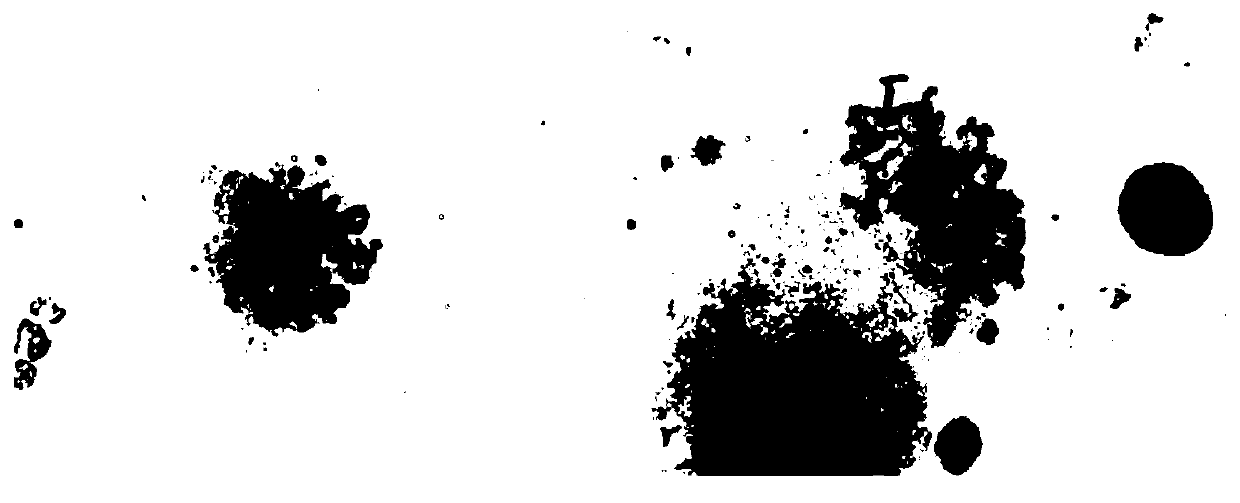Method for batch induction of scophthalmus maximus tetraploid fries
A technology of turbot and tetraploid, applied in the field of chromosome manipulation
- Summary
- Abstract
- Description
- Claims
- Application Information
AI Technical Summary
Problems solved by technology
Method used
Image
Examples
Embodiment 1
[0026] In the fertilization period, incubation period and induction period of this embodiment, the seawater temperature used in the three periods is a constant water temperature suitable for fertilization and hatching of turbot eggs, that is, the seawater temperature in the three periods of the fertilization period, incubation period and induction period is 14.5 ± 0.1°C.
[0027] 1) Collection of gametes
[0028] Select broodstock that are in the process of laying eggs and expecting to lay them gently on the cushion, wipe off the water and dirt around their body surface and reproductive holes, and then slowly squeeze from back to front, and squeeze the sperm and eggs into the beaker respectively Or reserve in a basin. Observed under the dissecting microscope, the eggs are spherical, transparent, with concentrated oil globules, moderate in diameter and uniform in size;
[0029] 2) Artificial insemination
[0030] Control group artificial insemination:
[0031] Take 0.1mL of...
Embodiment 2
[0044] In the fertilization period, incubation period and induction period of this embodiment, the seawater temperature used in the three periods is a constant water temperature suitable for the fertilization and hatching of turbot eggs, that is, the seawater temperature in the three periods of the fertilization period, the incubation period and the induction period is 15.0 ± 0.1°C.
[0045] 1) Collection of gametes
[0046] Select broodstock that are in the process of laying eggs and expecting to lay them gently on the cushion, wipe off the water and dirt around their body surface and reproductive holes, and then slowly squeeze from back to front, and squeeze the sperm and eggs into the beaker respectively Or reserve in a basin. Observed under an anatomical microscope, the eggs are spherical, transparent, with concentrated oil globules, moderate in diameter and uniform in size;
[0047] 2) Artificial insemination
[0048] Control group artificial insemination:
[0049] Ta...
Embodiment 3
[0062] In the fertilization period, incubation period and induction period of this embodiment, the seawater temperature used in the three periods is a constant water temperature suitable for fertilization and hatching of turbot eggs, that is, the seawater temperature in the three periods of the fertilization period, incubation period and induction period is 15.5 ± 0.1°C.
[0063] 1) Collection of gametes
[0064] Select broodstock that are in the process of laying eggs and expecting to lay them gently on the cushion, wipe off the water and dirt around their body surface and reproductive holes, and then slowly squeeze from back to front, and squeeze the sperm and eggs into the beaker respectively Or reserve in a basin. Observed under an anatomical microscope, the eggs are spherical, transparent, with concentrated oil globules, moderate in diameter and uniform in size;
[0065] 2) Artificial insemination
[0066] Control group artificial insemination:
[0067] Take 0.15mL of...
PUM
 Login to View More
Login to View More Abstract
Description
Claims
Application Information
 Login to View More
Login to View More - R&D
- Intellectual Property
- Life Sciences
- Materials
- Tech Scout
- Unparalleled Data Quality
- Higher Quality Content
- 60% Fewer Hallucinations
Browse by: Latest US Patents, China's latest patents, Technical Efficacy Thesaurus, Application Domain, Technology Topic, Popular Technical Reports.
© 2025 PatSnap. All rights reserved.Legal|Privacy policy|Modern Slavery Act Transparency Statement|Sitemap|About US| Contact US: help@patsnap.com



